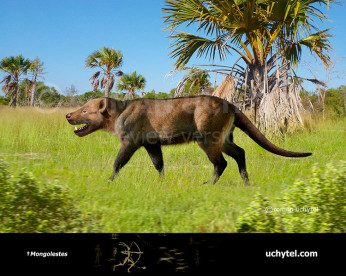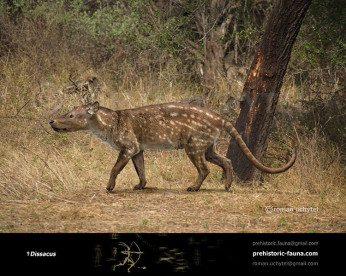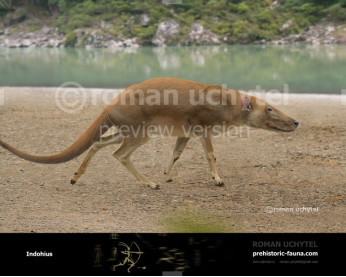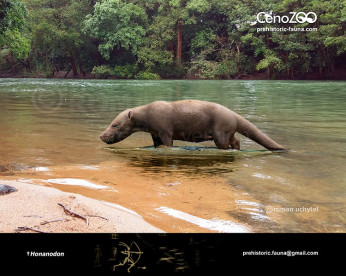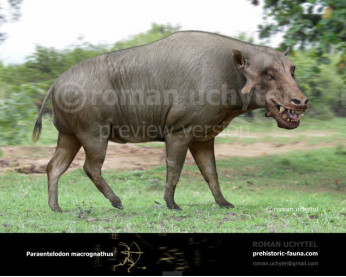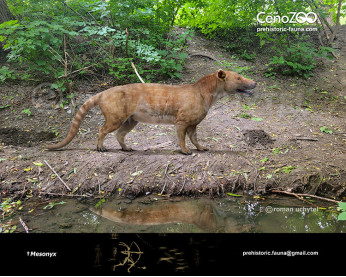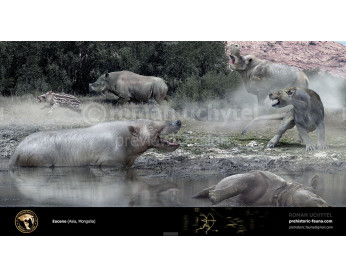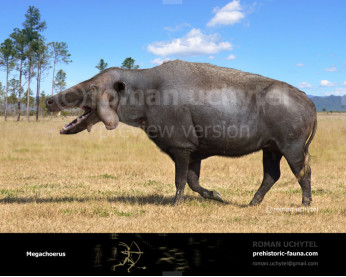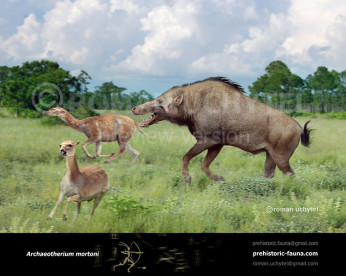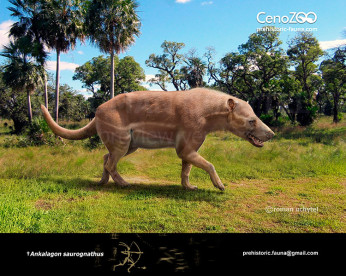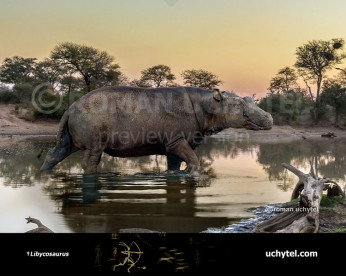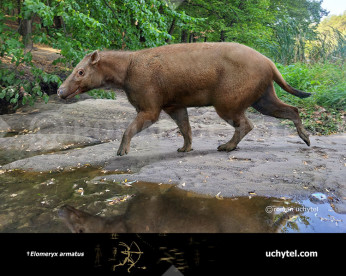Andrewsarchus mongoliensis
299299Andrewsarchus (†Andrewsarchus mongoliensis (Osborn, 1924))
Order: Artiodactyla
Clade: Cetancodontamorpha
Family: Andrewsarchidae
Temporal range: during the Eocene (Asia) (32-60 million years ago)
Dimensions: length - 3.2 m, height - 140 сm, weight ~ 800 kg
A typical representative: Andrewsarchus mongoliensis
Andrewsarchus mongoliensis ("bone cruncher") was the largest carnivorous land mammal that lived during the Eocene epoch between 32 to 60 million years ago. It had a long snout with large, sharp teeth and flat cheek teeth that may have been used to crush bones. Because Andrewsarchus is only known from a single enormous skull (83 cm long and 56 cm wide), whether it was an active predator or a large scavenger is open to debate, as is its exact time range. Though scientists can’t be sure, the huge skull suggests the animal may have been twice as big as a grizzly bear, making it the largest carnivorous land mammal of all time. It is belived that Andrewsarchus has eaten turtles because the only Andrewsarchus fossil to be found was in a prehistoric coastal area. But they could also have eaten giant herbivorous mammals, such as the rhino-like Brontotherium. Some scientists think Andrewsarchus is a close relative of whales, since they share a similar jaw structure.
Andrewsarchus (†Andrewsarchus mongoliensis (Osborn, 1924))
Order: Artiodactyla
Clade: Cetancodontamorpha
Family: Andrewsarchidae
Temporal range: during the Eocene (Asia) (32-60 million years ago)
Dimensions: length - 3.2 m, height - 140 сm, weight ~ 800 kg
A typical representative: Andrewsarchus mongoliensis
Andrewsarchus mongoliensis ("bone cruncher") was the largest carnivorous land mammal that lived during the Eocene epoch between 32 to 60 million years ago. It had a long snout with large, sharp teeth and flat cheek teeth that may have been used to crush bones. Because Andrewsarchus is only known from a single enormous skull (83 cm long and 56 cm wide), whether it was an active predator or a large scavenger is open to debate, as is its exact time range. Though scientists can’t be sure, the huge skull suggests the animal may have been twice as big as a grizzly bear, making it the largest carnivorous land mammal of all time. It is belived that Andrewsarchus has eaten turtles because the only Andrewsarchus fossil to be found was in a prehistoric coastal area. But they could also have eaten giant herbivorous mammals, such as the rhino-like Brontotherium. Some scientists think Andrewsarchus is a close relative of whales, since they share a similar jaw structure.

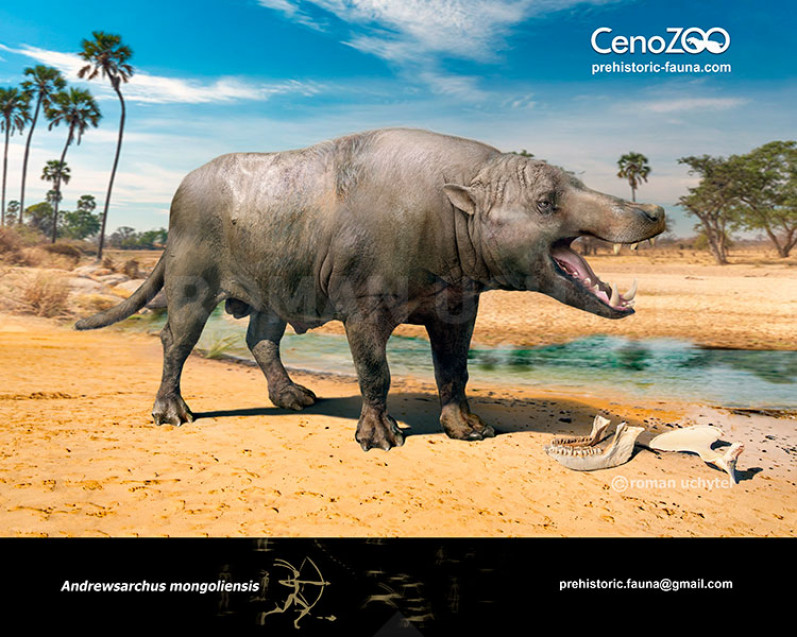
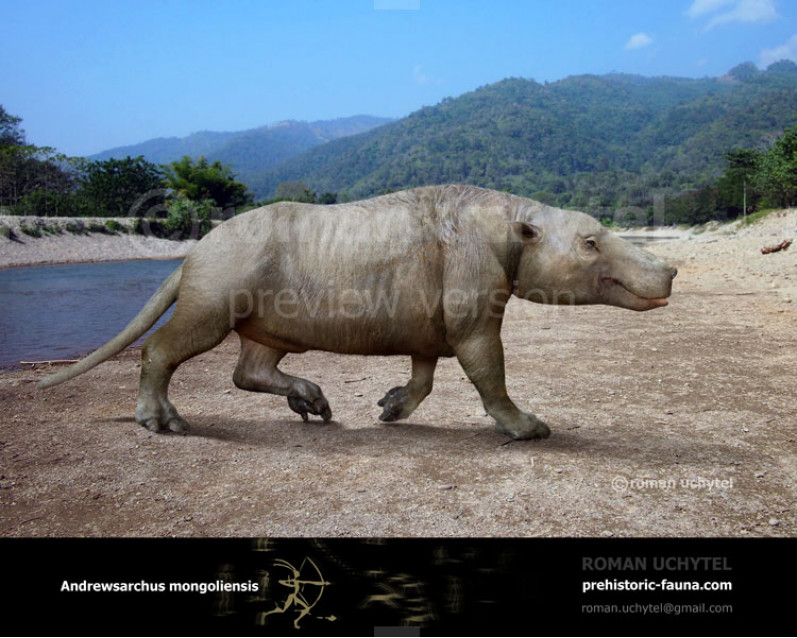
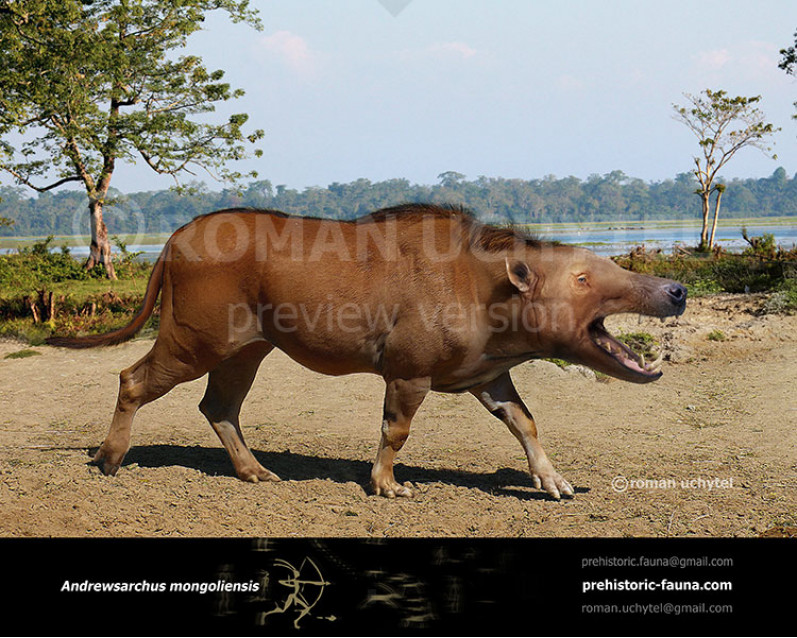
-797x638.jpg)
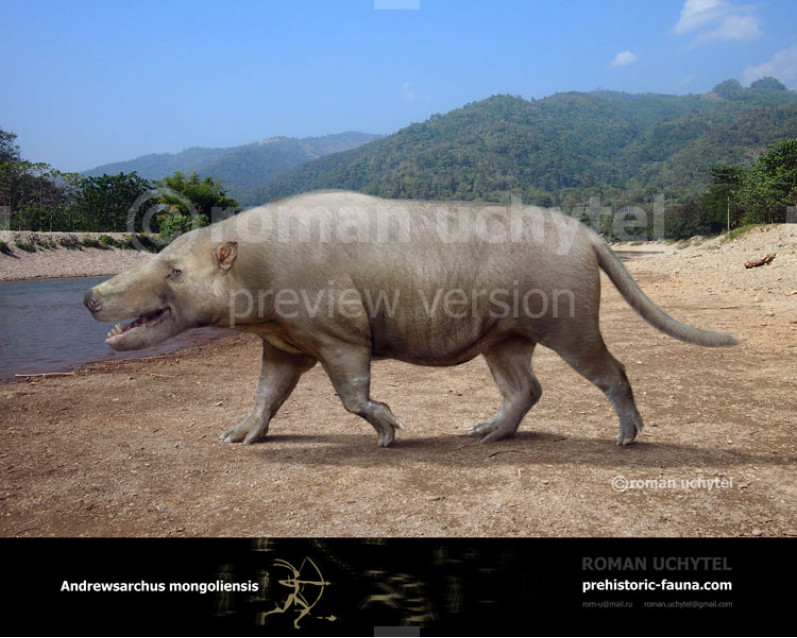
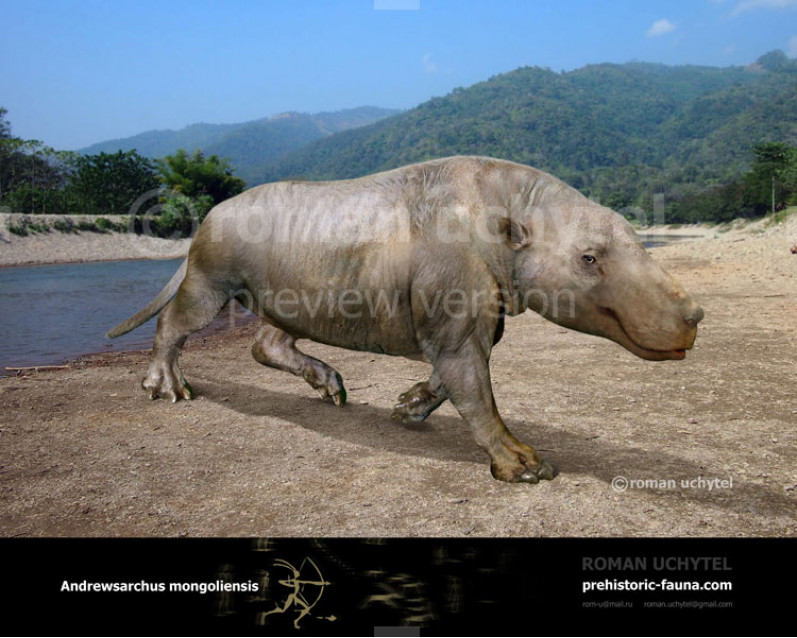
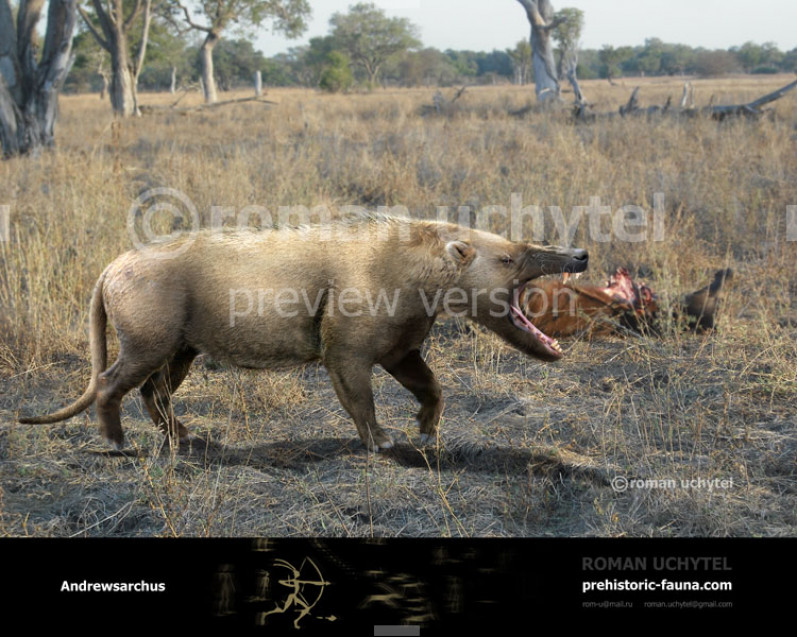
1-797x638.jpg)
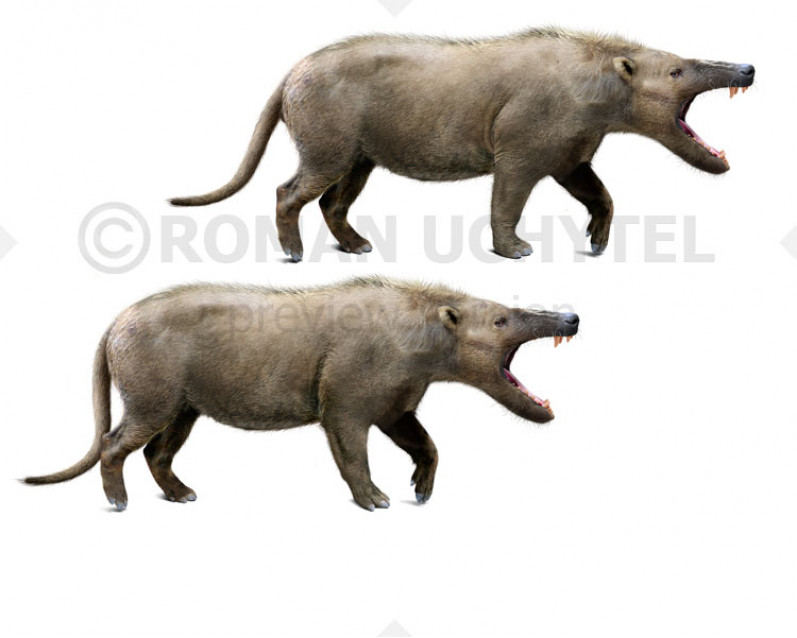
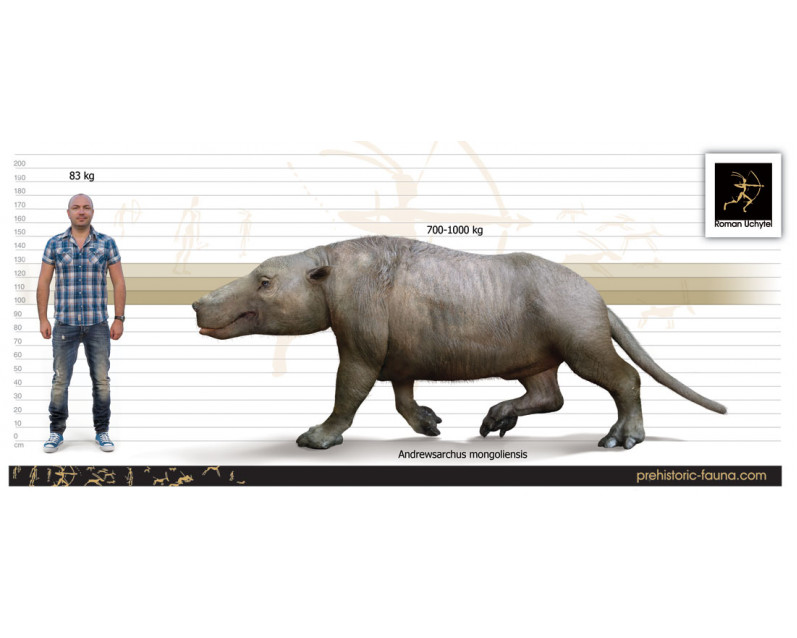



-70x56.jpg)



1-70x56.jpg)


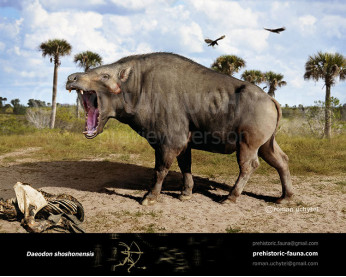
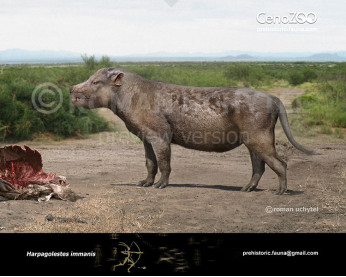
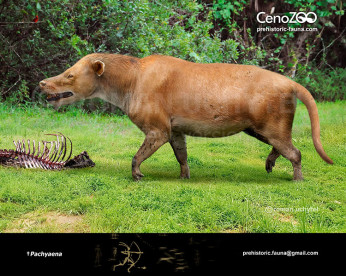
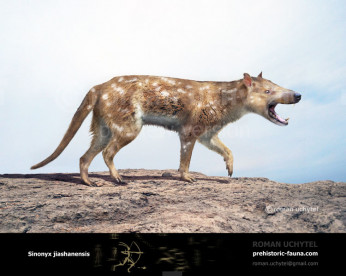
-346x277.jpg)
